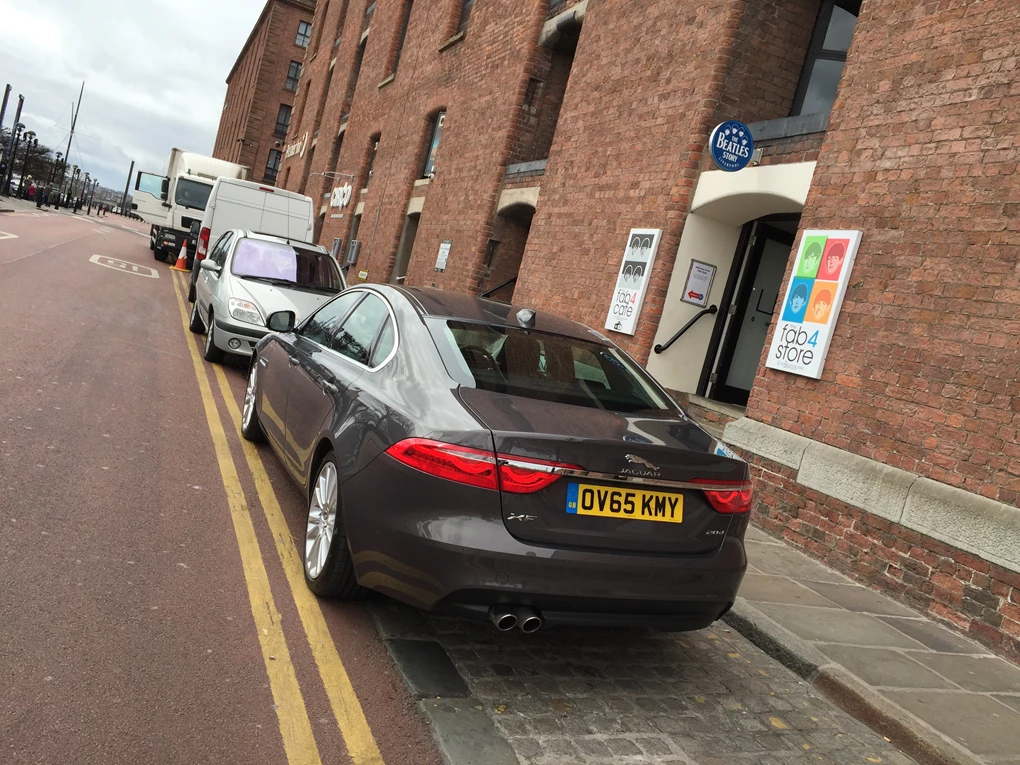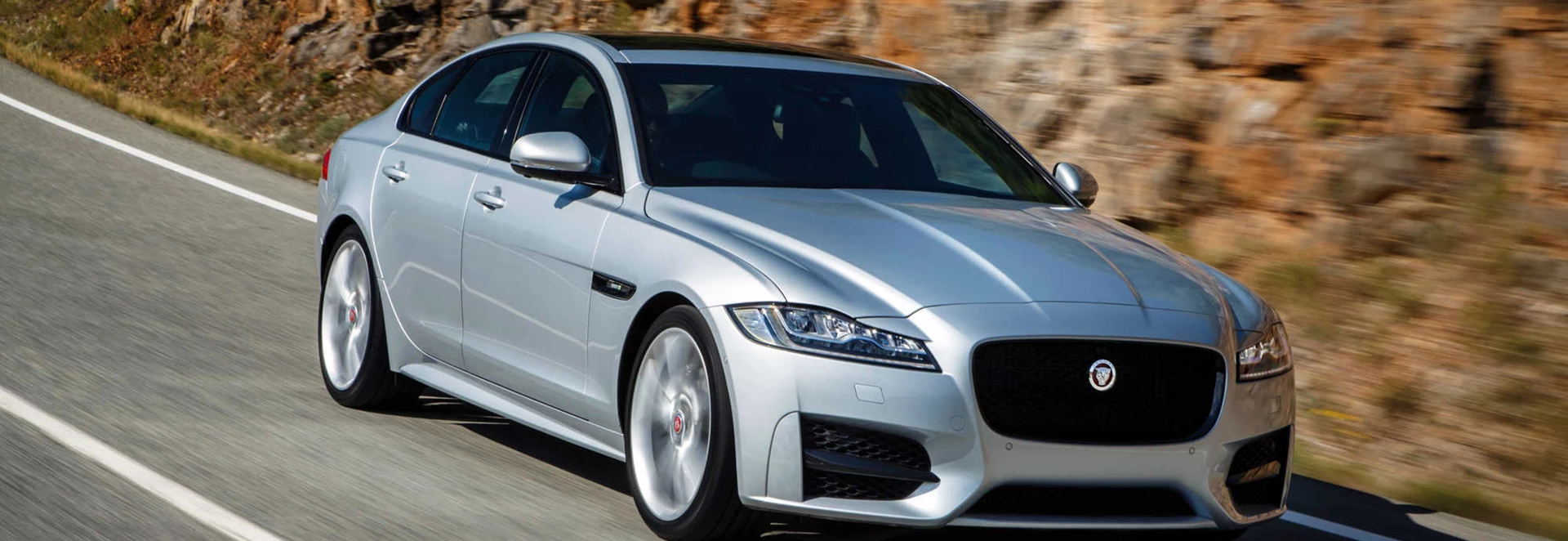When the Jaguar XF launched back in 2007 it shook up the luxury saloon market for the better, offering a stylish, British alternative to German kingpins like the BMW 5 Series, Audi A6 and Mercedes E-Class. So what of the new second-generation XF?
As well as looking more menacing than the last model, the new XF has shed a huge 190kg of weight, thanks to an aluminium-intensive architecture. It is also slightly shorter than the previous-gen (by 7mm), although it has a slightly longer wheelbase.
But these aren’t the only changes. Jaguar has jam-packed the XF with a flurry of new additions that enhance its suspension set-up, dampers, engines and steering.
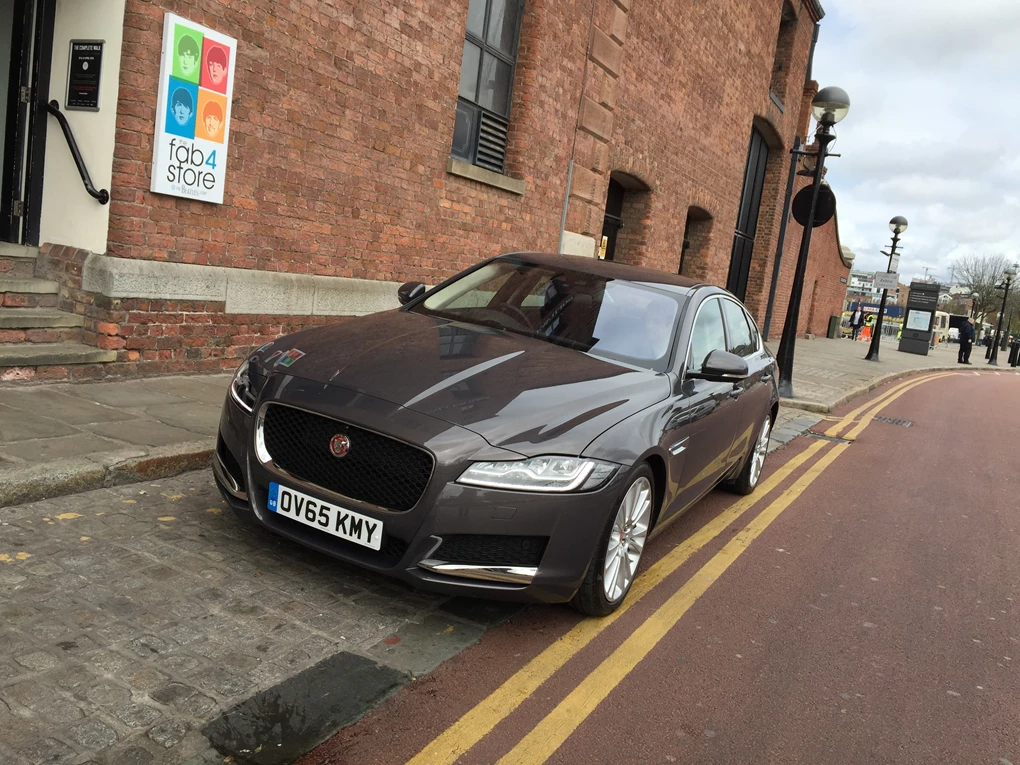
Performance
The new 2.0-litre 'Ingenium' diesel engine is featured in the XF and is expected to be the bestselling engine, offering two power outputs, 161bhp and 178bhp. A six-speed manual comes as standard, but an eight-speed automatic is offered as an option. The auto is incredibly slick and will keep up with any mood swings in your driving style, be it flooring it on an open road or steadily accelerating in the city. The six-speed manual takes some getting used to though, as the gearing is quite long, especailly through first, second and third.
Performance isn’t mouth-watering in the 2.0-litre diesel, but if all you require oomph wise is a boost when overtaking, then this engine is spot on - and the lower-powered 161bhp will suffice for most. Its frugality is its trump card though – which we will get to a bit later.
If you aren't keen on the idea of rear-wheel drive in winter, there's also a four-wheel drive XF available for the first time, albeit only with the 178bhp diesel automatic.
The more obvious performance choices are the 296bhp 3.0-litre V6 diesel and the supercharged 375bhp 3.0-litre V6 petrol. These are only available with the auto though. Those looking for a performance saloon car should go for the V6 petrol XF S model, which boasts a zero to 60mph sprint time of just 5.1 seconds. Or, you could wait for an expected XFR supersaloon, which will almost certainly get the supercharged V8 found in models like the F-TYPE Coupe, with well north of 500bhp.
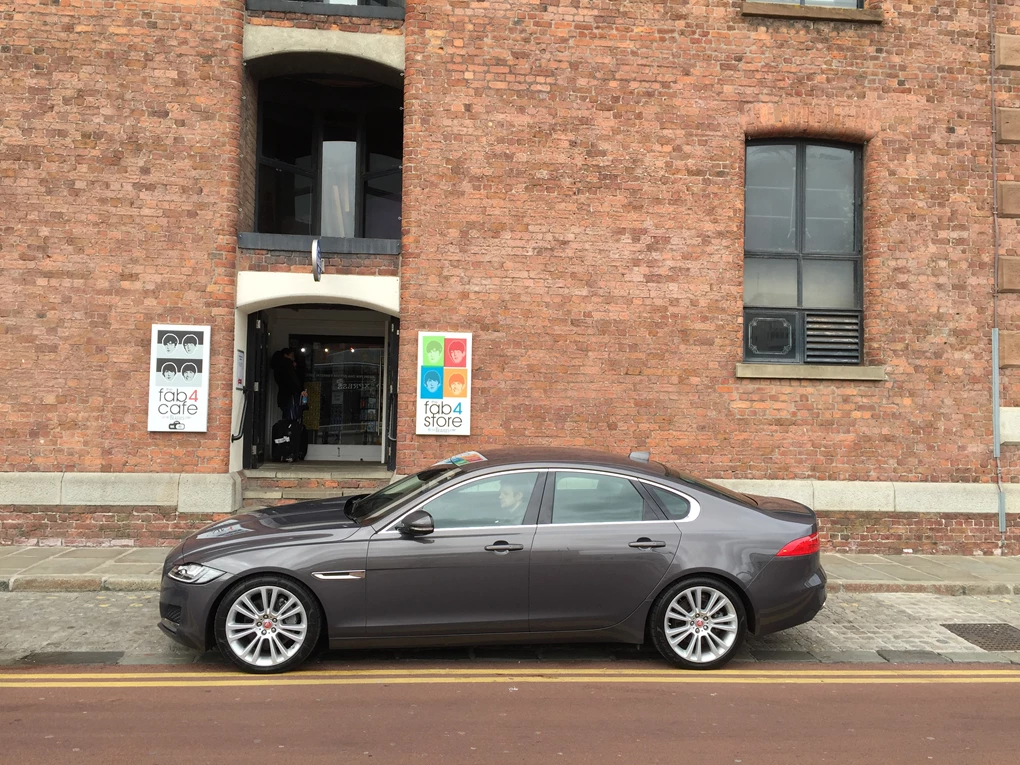
Ride and Handling
Throw in its significant weight loss and an increase in torsional rigidity and you have one of the nimblest performers in the class.
The XF has bags of technical wizardry in its arsenal when it comes to its ride and handling. Thanks to a new Integral Link system, which allows for the independent control of longitudinal and lateral stiffness, the XF is more agile than ever. Throw in its significant weight loss and an increase in torsional rigidity and you have one of the nimblest performers in the class. Its Torque Vectoring by Braking system means that the XF is composed when going into a tight bend as understeer is reduced. New damper technology also means that the XF’s suspension can adapt accordingly, softening the ride on motorways and stiffening up when you launch it into a corner. The electric power-assisted steering adapts along with the driving situation as well, weighting up at speed and offering a lighter feel when negotiating busy city or urban streets. The steering is also incredibly accurate and responsive, offering one of the most engaging experiences for a saloon on the market – arguably more gripping than the BMW 5 Series. Those who want more of a bespoke feel can utilise the Configurable Dynamics of the V6 models. Unlike some cars that merely allow a ‘Sport mode’ for example, the XF’s configurable dynamics allow for individuality when it comes to things like throttle mapping and steering feel, along with suspension stiffness if adaptive dampers are fitted.
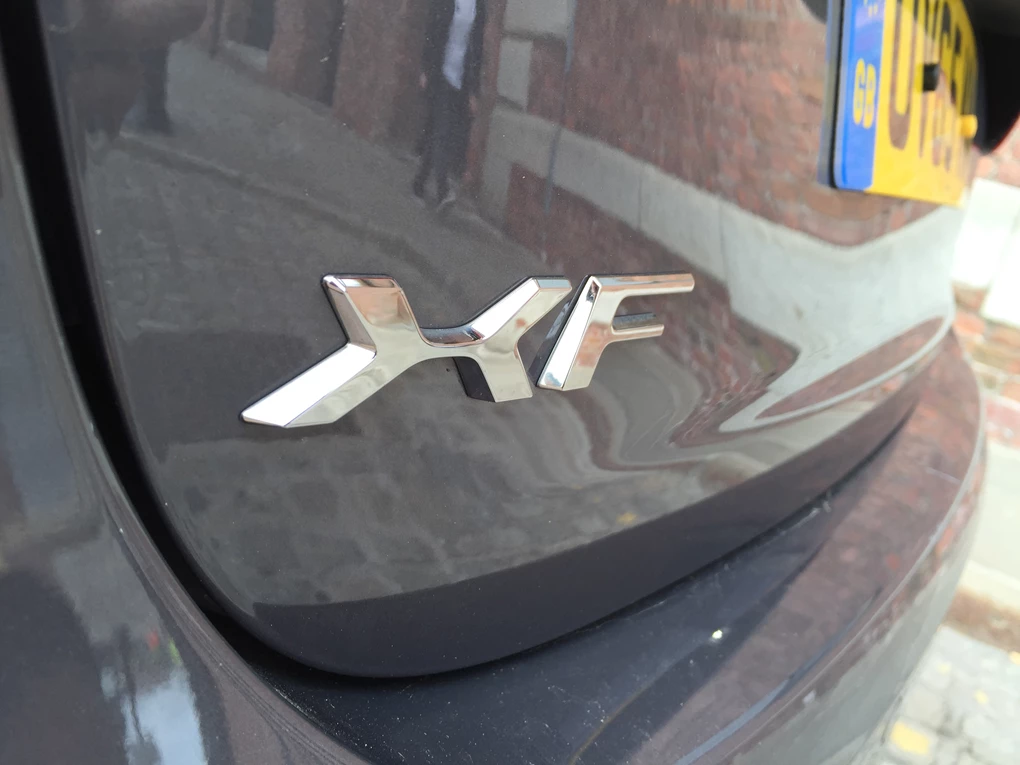
Interior and Equipment
Although the new XF has an increased wheelbase of 51mm, it is actually 7mm shorter overall.
There are four trims to ponder from launch: Prestige, R-Sport, Portfolio and S. As you might expect, the entry-level Prestige model is bursting with kit, including an eight-inch touchscreen InControl system, cruise control, rear parking sensors, 17-inch alloys, leather seats – the list goes on. It is also worth mentioning that the new XF shares the same steering wheel with the F-TYPE sports car. We tested the R-Sport model which comes with some cool sporty highlights, including aluminium inserts and contrasting stitching for the leather seats. The Portfolio trim on the other hand gives more of a classic feel when it comes to its interior trim. The XF retains its dramatic ignition sequence with rolling vents and a raising gear selector, if you have the automatic. The new eight-inch infotainment screen, which can be upgraded to a 10.2-inch system, is definitely one of the main attractions in the cabin. Very responsive and packed full of useful connectivity features – including WiFi – it is a big improvement when compared to the old system in the previous XF model. Highlights on the options list include the Advanced Parking Assist Pack – which adds a 360 degree camera, an Active Safety Pack, which adds lane depart assist and reverse traffic detection, and the Black Pack, which adds some cool sporty exterior highlights like a black grille surround.
Cost
The new 2.0-litre Ingenium diesel is what really makes the XF shine
The new 2.0-litre Ingenium diesel is what really makes the XF shine. With CO2 as low as 104g/km, the XF boasts an annual VED tax figure of just £20. Couple that with its claimed fuel economy figure of up to 70mpg, and you have one of the most efficient and cheapest to run cars in its segment. Those looking for a business car will be glad to know that these low emissions mean a BIK tax of just 18 per cent for 2015/2016.
Our Verdict
Jaguar delivered on such a proven formula with the first-generation model, it would have been foolish for the British marque to change the direction of the new XF too drastically. Instead, Jaguar has made a catalogue of improvements, so the XF retains the same likeable qualities, but feels more modern and is better able to compete with its rivals. Many will dispute over whether it drives better than the ever-popular 5 Series, but surely, if a car is good enough to entertain that arguement, then it must be pretty good.
